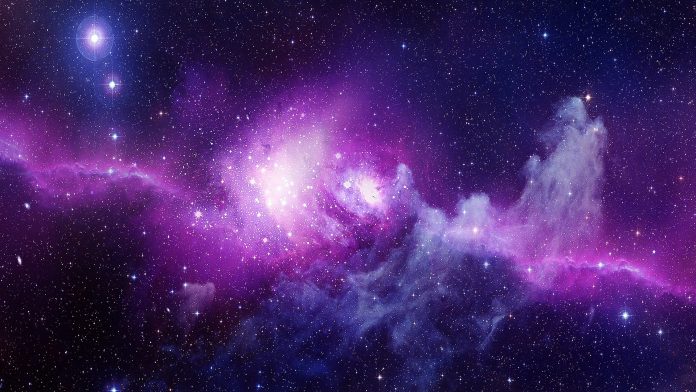Scientists at the University of Warwick have discovered a phenomenon whereby planet formation is hindered in young solar systems by warped protoplanetary discs.
In a novel study, researchers have shown the impact of passing stars, misaligning binary stars and passing gas clouds on the formation of planets in young solar systems. The team has modelled how cosmic events such as these can warp protoplanetary discs, the birthplaces of planets, in the early evolution of solar systems
The scientists’ findings have been published in the Astrophysical Journal and their study was funded by The Royal Society and the Engineering and Physical Sciences Research Council, part of UK Research and Innovation.
Protoplanetary discs
Solar systems develop from protoplanetary discs, that are enormous spinning clouds of gas and dust that ultimately merge into the array of planets in the Universe. When these discs are young, they develop spiral structures, with all their dust and material pulled by the enormous gravitational effect of the disc spinning.
However, astronomers have discovered a remarkable number of protoplanetary discs that, in spite of the fact they are large enough to have a spiral structure, exhibit no signs of one. The Warwick researchers have been examining what could be preventing a disc from forming a spiral structure.
PhD student Sahl Rowther from the University’s Department of Physics produced a three-dimensional hydrodynamical simulation of a flat self-gravitating disc by utilising a method known as smoothed-particle hydrodynamics. He added different levels of curvature to the disc to warp it and to examine the effect on the disc’s spiral structure. In all but the smallest warps, the spiral structure vanished.
The spiral structure in a protoplanetary disc is essential for the development of planets through Gravitational Instability, thus the team’s finding enhance our comprehension of how solar systems grow.
Understanding warped planetary discs
Co-author Dr Rebecca Nealon, Stephen Hawking Fellow in the Department of Physics, explained: “Warps will inhibit planet formation through Gravitational Instability, in the sense that these spiral structures, which fragment into clumps that eventually form planets, are where the disc structure will be disrupted. Anything that disturbs that spiral structure makes it harder for that clumping to occur and harder for the planets to form via Gravitational Instability.”
The researchers explained that the warp warms up the disc by stimulating small perturbations to the velocity of the gas as it orbits. The gas must cool in order to clump together. Therefore, in heating up the disc, the spiral arm structure is wiped out.
There are several possible ways for a protoplanetary disc to warp. For example, if a large object, like a star, passes in close proximity in a flyby encounter; if the disc encircles a binary star system that orbits out of alignment with the disc; or if a adjacent source of gas accretes onto the disc.
Recently, data confirming warped protoplanetary disc has substantially grown, indicating that they are more common in the Universe than once thought. As well as this, it offers a possible justification for the large number of massive protoplanetary discs that do not exhibit a spiral structure.
Warps impact planetary formation
Dr Nealon commented: “Normally we think of these discs forming in isolation, but that’s not really the case. It’s a chaotic neighbourhood, with lots of stars nearby, and you might have a star that passes close by and that gravitational interaction is enough to cause this warp.
“Once we started getting observations of warped discs, we had to start considering warps in our modelling. We need a greater consideration of warps in protoplanetary disc evolution and understanding that warps can impact existing disc evolution mechanisms and physics. We need to consider how warps affect all the factors in planetary formation.”
Sahl Rowther concluded: “This study combines two physical effects that haven’t been combined before, the physics of self-gravitating discs with the warp. This is important because self-gravitating discs have been studied for a while and it’s a well-established field. Warps are a much more recent idea.
“We have modelled this in the most simple way possible to allow us to be really sure about what we’ve done, and to easily demonstrate it.”









